
|
You entered: Ranger 8
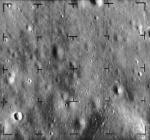 The Sea of Tranquillity: 5 Seconds To Impact
The Sea of Tranquillity: 5 Seconds To Impact
30.07.1999
On February 20th, 1965, the Ranger 8 spacecraft crashed into the Moon. Rapidly transmitting a series of pictures to ground controllers, its camera recorded this one at an altitude of about 11 kilometers, 5 seconds before impacting the lunar surface. Two kilometers across, with 4 meter
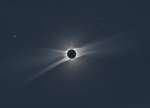 A Darkened Sky
A Darkened Sky
20.09.2008
For a moment on August 1st, the daytime sky grew dark along the path of a total solar eclipse. While watching the geocentric celestial event from Mongolia, photographer Miloslav Druckmuller recorded multiple images with two separate cameras as the Moon blocked the bright solar disk and darkened the sky.
 Space Station in the Moon
Space Station in the Moon
6.02.2009
On February 2nd, a first quarter Moon shone in planet Earth's early evening sky. As seen from a location on the US west coast near Mt. Hamilton, California, the International Space Station also arched above the horizon, crossing in front of the Moon's sunlit surface. The space station's transit lasted 0.49 seconds.
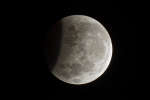 August Lunar Eclipse
August Lunar Eclipse
9.08.2017
August's Full Moon is framed in this sharp, high dynamic range composition. Captured before sunrise on August 8 from Sydney, Australia, south is up and the Earth's dark, umbral shadow is at the left, near the maximum phase of a partial lunar eclipse.
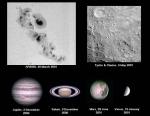 Solar System Web Cam
Solar System Web Cam
14.07.2001
Ranging throughout the solar system, these pictures all have something in common. They were taken with an 8 inch diameter telescope, a size popular with amateur astronomy buffs, and slightly modified "web cam" of the type widely used to send images out over the internet.
 Moons at Opposition
Moons at Opposition
10.10.2014
From the early hours of October 8, over the Santa Cruz Mountains near Los Gatos, California, the totally eclipsed Moon shows a range of color across this well-exposed telescopic view of the lunar eclipse.
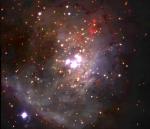 Free Floating Planets In Orion
Free Floating Planets In Orion
31.03.2000
This false-colour image of the young Trapezium star cluster in the Orion Nebula was made with an infrared camera at wavelengths about twice as long as visible light. The infrared data are part...
 The GRB 110328A Symphony
The GRB 110328A Symphony
19.04.2011
A symphony of planet-wide observations began abruptly on March 28 when the Earth-orbiting Swift satellite detected a burst of high-frequency gamma-rays from GRB 110328A. When the same source flared again after a 45 minute pause it was clear this event was not a typical gamma-ray burst.
 Planet Earth at Blue Hour
Planet Earth at Blue Hour
11.10.2019
Nature photographers and other fans of planet Earth always look forward to the blue hour. That's the transition in twilight, just before sunrise or after sunset, when the Sun is below the horizon but land and sky are still suffused with beautiful bluish hues of light.
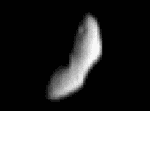 Eros Encounter Nears
Eros Encounter Nears
10.02.2000
After an unanticipated extra trip around the Sun, the NEAR spacecraft is now politely approaching asteroid 433, Eros, at a respectful relative speed of about 20 miles per hour. Still nearly 2,000 miles distant, NEAR will close to within approximately 200 miles by February 14th - Valentine's Day.
|
January February March April |
|||||||||||||||||||||||||||||||||||||||||||||||||